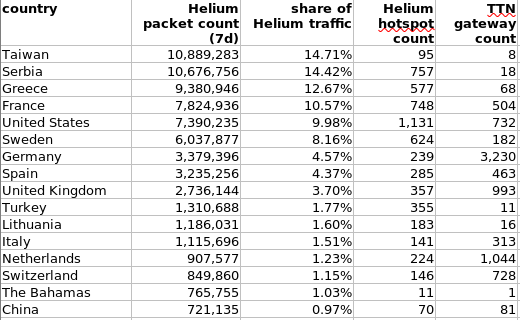A further analysis of the 7,000 most active Helium hotspots that handle 90% of the real data traffic:
- Europe sees about 60% of the total traffic, with Serbia, Greece and France each over 10%
- the USA only sees 10%
- full list on Github with map
For the most active Helium countries (in terms of real data traffic), i compared with number of TTN gateways:

(note: i did not use the new TTN API for this analysis as i could not find the country in there, the old https://www.thethingsnetwork.org/gateway-data/country/ still seems to work)
Belgrade, Athens, and Paris seem to have dense and active Helium networks.